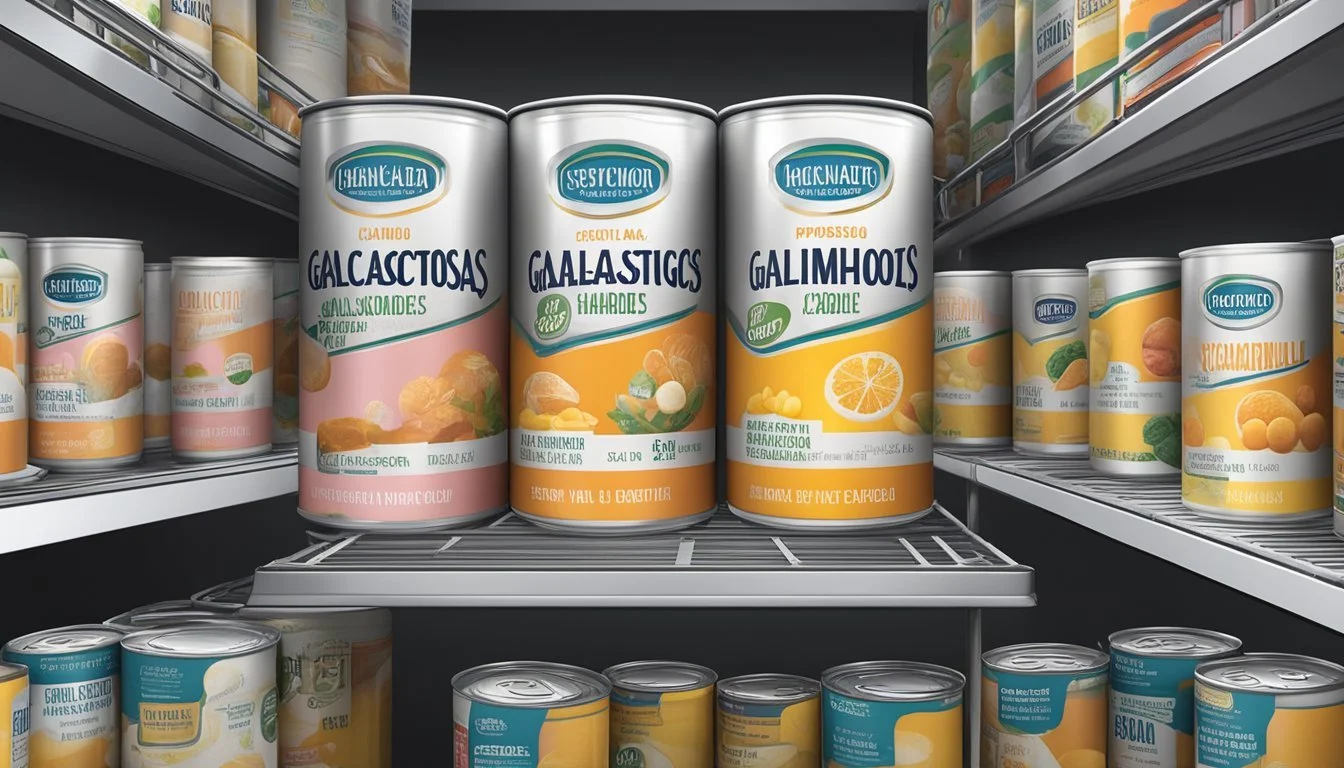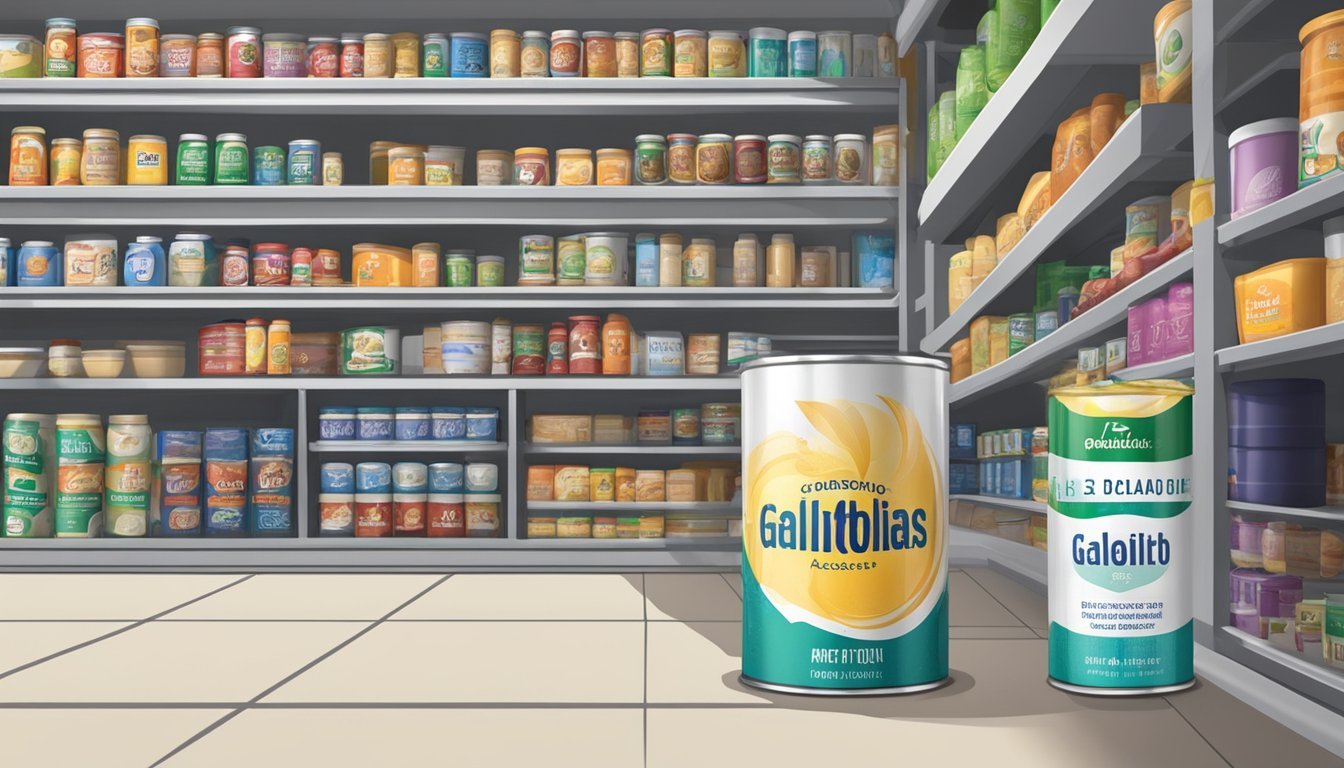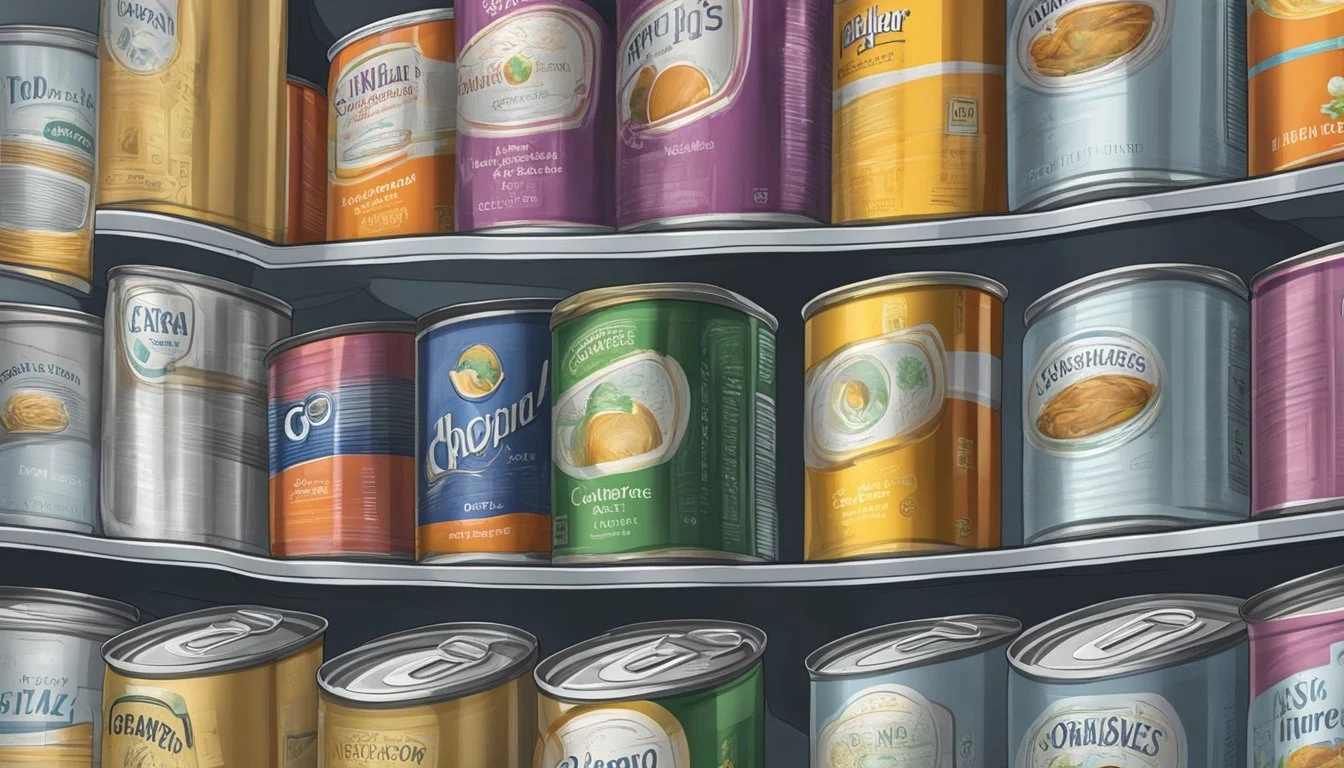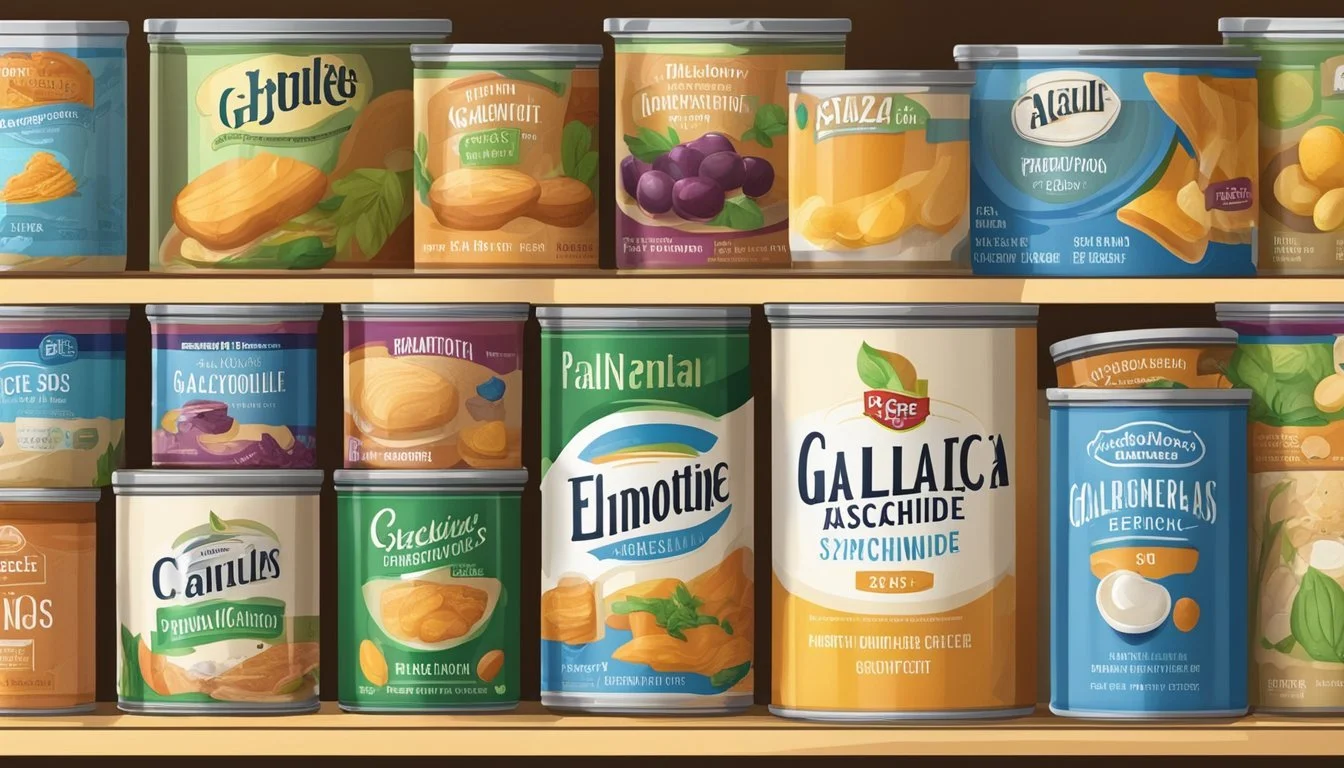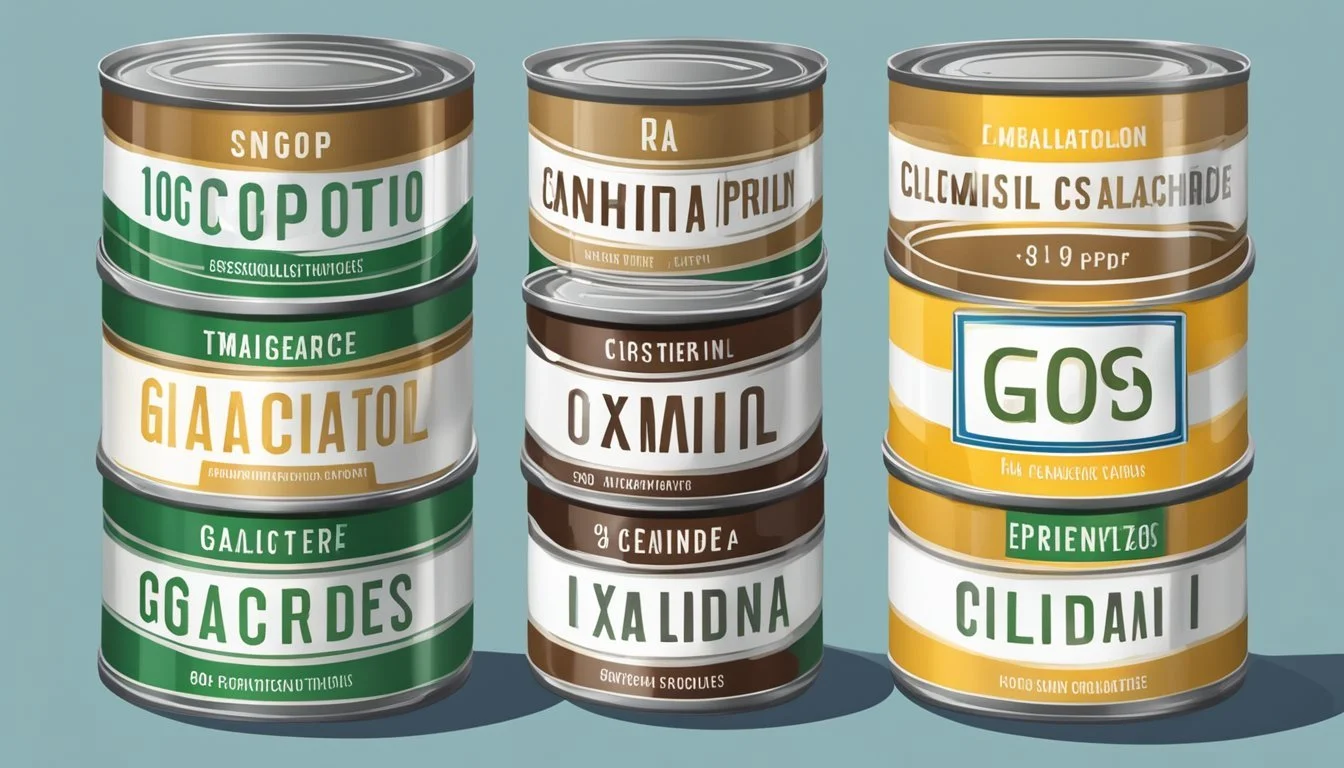How Long Does Canned Galactooligosaccharides (GOS) Last?
Shelf Life and Storage Tips
Galactooligosaccharides (GOS) are a form of oligosaccharides composed of galactose molecules and are used predominantly as prebiotics, offering health benefits by promoting the growth of beneficial gut bacteria. They are naturally present in human milk and also synthesized for incorporation into various food products, including infant formula. When it comes to canned goods, which include a variety of food products potentially enriched with GOS for added health benefits, understanding their shelf life is crucial for both safety and nutritional value.
The shelf life of canned goods containing GOS, as with other canned products, is influenced by factors such as the canning method used, the integrity of the can seal, and storage conditions. Canned goods are recognized for their longevity, and when processed under the right conditions, products remain safe for consumption well beyond one year. However, while canned GOS may retain safety over extended periods, the aspect of quality – including taste, texture, and nutritional content – may decline over time.
For optimal quality, consumers are often advised to use canned products within the first year of purchase, although these items may still be safe to consume afterwards, as long as the can remains undamaged and the seal unbroken. In any case, consumers should always observe canned goods for usual signs of spoilage such as bulging cans, leaks, rust, or any off-odors upon opening, regardless of the listed expiration date.
Understanding Galactooligosaccharides (GOS)
Galactooligosaccharides (GOS) have a significant impact on nutrition and gut health, possessing prebiotic properties that can influence bifidobacteria growth and mineral absorption.
What Are Galactooligosaccharides?
Galactooligosaccharides (GOS) are composed of chains of galactose molecules linked together, with a glucose molecule typically at the end. Created by the enzymatic conversion of lactose, GOS may vary in length and have a degree of polymerization (DP) generally between 3 to 8 galactose units.
Health Benefits of GOS
Galactooligosaccharides exhibit notable prebiotic effects, fostering a healthy gut microbiota. They serve as food for bifidobacteria, beneficial microbes in the intestine, promoting their growth and activity. This bifidogenic effect can enhance gut barrier function and stimulate the production of short-chain fatty acids, which play a critical role in gut health. Furthermore, GOS consumption may improve mineral absorption in the digestive system.
Bifidobacteria growth: Stimulates these beneficial bacteria, improving gut health.
Gut barrier function: Strengthens the protective lining of the gastrointestinal tract.
Mineral absorption: May enhance the uptake of essential minerals from the diet.
Sources of GOS in Diet
Galactooligosaccharides occur naturally in human milk and are also found in processed foods, especially in fortified products such as infant formulas. Industrial production of GOS usually involves enzymatic synthesis, making them accessible for broad use in nutrition. Food sources rich in GOS include:
Human milk: Particularly high in oligogalactosyllactose, the GOS found in mother’s milk.
Infant formula: Often fortified with GOS to mimic the nutritional content of human milk.
Dietary supplements: Available to support gastrointestinal health and nutrition.
Canning Process and GOS Preservation
Canning is a reliable method to extend the shelf life of foods including those that contain Galactooligosaccharides (GOS). Understanding the canning process provides insight into how GOS preservation is affected.
How Canning Works
The primary goal of canning is to preserve food by sealing it within an airtight container. The process begins with food being prepared and placed into cans or jars. A crucial step is the treatment of the food at high temperatures, typically involving a boil, which serves to eliminate harmful microbes. Following this, the containers are sealed and heated once again to ensure that any remaining bacteria are destroyed and to create a vacuum seal.
Effect of Canning on GOS
The effect of the canning process on GOS depends on the temperature and cooking process involved. High temperatures used during canning might alter the structure of these delicate oligosaccharides. However, because GOS are relatively stable, they can withstand the canning process without significant degradation. As long as the canned goods do not reach temperatures that break down the GOS molecular structure, they should retain their prebiotic benefits. Home canning, though generally performed at lower temperatures, must still follow strict guidelines to preserve the integrity of GOS.
Shelf Life of Canned GOS
When considering the storage and use of canned galactooligosaccharides (GOS), it's essential to know the factors that influence their shelf life and how expiration dates should guide their use.
Factors Affecting Shelf Life
Storage Conditions: To maximize the shelf life of canned GOS, one must store them in a cool, dry place such as a pantry. Ideal storage temperatures range between 50°F and 70°F. Excessive heat can lead to degradation of the product, while moisture can compromise the integrity of the can.
Acidity Levels: GOS are typically considered low-acid ingredients. Low-acid canned foods generally last longer than high-acid foods. This difference is significant as low-acid canned foods can retain quality from 2 to 5 years when stored properly.
Can Quality: The condition of the can itself plays a vital role. Dents, rust, or swelling can affect the quality of the contents. Canned GOS should remain in their original undamaged packaging to maintain their freshness and quality.
Expiration Dates Explained
Marked Expiration Dates: Canned goods come with expiration dates printed on the label. These dates provide a guideline for peak quality rather than a hard safety cutoff. While canned GOS may be safe to consume after the expiration date, the best sensory and nutritional qualities are present before this date.
Quality over Time: Although safe, the quality of canned GOS — as with other canned foods — may deteriorate after the expiration date. For GOS specifically, one should monitor any changes in texture or flavor as indicators that the product may no longer be at its best.
By adhering to these considerations, consumers can ensure they utilize their canned GOS while it still offers the optimal balance of safety, taste, and nutritional benefits.
Storage Conditions for Canned Goods
When it comes to long-lasting preservation, knowing how to store canned goods plays a critical role in maintaining their quality and ensuring their shelf-life. Here, the focus is on the optimal storage conditions specifically for canned galactooligosaccharides (GOS).
Best Practices for Storage
One must store canned goods in a cool, dry place, such as a pantry or cupboard, away from direct sunlight and sources of heat. A consistent environment prevents degradation of the can's contents and maintains the quality of GOS. Here are specific guidelines for storage:
Temperature: Aim to keep the temperature between 50°F (10°C) and 70°F (21°C).
Moisture: Avoid areas with high humidity; a dehumidifier can help in damp locations.
Spacing: Ensure cans are not stacked too high to prevent denting and seams from weakening.
How Temperature Affects Canned GOS
Temperature plays a pivotal role in determining the shelf-life and safety of canned GOS. Excessive heat can cause the cans to swell and potentially spoil the product, whereas temperatures that fluctuate can lead to condensation inside the can, affecting its integrity.
Above 75°F (24°C): Can lead to decreased shelf-life and compromise the quality of GOS.
Below 50°F (10°C): Not necessary and does not extend the life of canned goods, unlike refrigeration for perishable items.
Note: Storing canned goods in a refrigerator is not recommended, as it does not extend shelf-life and can contribute to can corrosion.
Evaluating Quality and Safety
When considering the quality and safety of canned galacto-oligosaccharides (GOS), it's crucial to understand how to identify spoilage and be aware of food safety risks associated with canned food products.
Identifying Spoilage Signs
Visual Inspection: One should examine the can for signs of rust, dents, or bulging, as these can be indicators of compromised integrity. Rust can penetrate the can and contaminate the contents, while dents can create micro-holes allowing bacteria to enter. Bulging suggests gas production, often due to bacteria such as Clostridium botulinum, which can cause botulism, a serious toxin-mediated condition.
Smell and Texture: Upon opening, if the product has an off-odor or if the texture of the GOS has changed, it may have undergone spoilage. Any deviation from the expected smell or texture indicates that the product should not be consumed.
Understanding Food Safety Risks
Toxin Production: Canned foods, if improperly processed or stored, can become breeding grounds for bacteria that produce toxins. Botulism, caused by the toxin of Clostridium botulinum, is of particular concern due to its life-threatening nature.
Best Practices: To mitigate risks, consumers should store canned GOS in a cool, dry place and adhere to the "use-by" date. Once opened, the GOS should be stored in a refrigerator in a separate container, preferably a glass or plastic one to maintain its quality and ensure food safety.
In essence, maintaining the good condition of canned GOS packaging and being vigilant for signs of spoilage are paramount to ensuring safety and quality.
Health and Nutritional Aspects
Canned galactooligosaccharides (GOS) retain a high nutritional value and continue to support digestive health due to their stable prebiotic properties that sustain gut microbiota balance.
Nutritional Value After Canning
Canning does not significantly compromise the nutritional value of GOS. The process primarily extends shelf life while locking in prebiotic benefits. GOS are composed of galactose units primarily derived from lactose and serve as food for beneficial gut bacteria such as bifidobacteria and lactobacillus. Even after canning, GOS maintain:
A consistent caloric value
The capacity to support intestinal health
Their role as a non-digestible prebiotic which can help with weight management
GOS and Digestive Health
GOS, when canned, preserve their prebiotic function, fostering a healthy gut microbiota. Their consumption is associated with:
Improvement in gut flora balance by stimulating the growth of beneficial bacteria like lactobacilli and bifidobacteria
Alleviation of common digestive problems such as bloating, constipation, and diarrhea
Potential benefits for individuals with lactose intolerance, as they are easily fermented by the gut flora
Enhancement of the immune system due to a healthier gut environment
The stability of canned GOS makes them a valuable addition to a diet aimed at improving or maintaining digestive and intestinal health.
Additional Considerations
In evaluating the shelf life of canned galactooligosaccharides (GOS), one must consider factors beyond the expiry date. Storage conditions and can integrity play crucial roles in longevity; however, understanding when to seek guidance from healthcare professionals is also vital, particularly when considering the potential side effects and interactions with other substances.
When to Seek Professional Medical Advice
Seeking professional medical advice is recommended if an individual experiences any unusual side effects after consuming canned GOS. Although GOS are generally recognized as safe, individuals with a known allergy to dairy products should consult with a healthcare provider before consuming products containing GOS, as they are derived from lactose. Additionally, individuals who are on a prescribed medication regimen should discuss with their healthcare provider about the potential interactions between GOS and their medications, as prebiotics can influence the gut milieu and hence the metabolism of certain drugs.
Conclusion
Shelf Life of Canned GOS: Canned Galactooligosaccharides (GOS) generally maintain their quality for two years when stored in a cool, dry place. They must remain unopened and in their original packaging to achieve this shelf life. Once opened, the contents should be used within one week, as exposure to air and moisture can degrade product quality.
Determining Quality: Upon expiration, GOS can undergo changes in composition that may affect their prebiotic properties. A visual inspection for signs of spoilage, such as discoloration or an off-odor, is a straightforward safety measure before consumption.
Safety Measures: Manufacturers adhere to stringent safety guidelines during the GOS packaging process to ensure the contents remain uncontaminated and safe for consumption. However, consumers should handle the product responsibly, complying with storage instructions provided on the label.
Preservation Tips:
Store in a cool, dry place.
Avoid temperature fluctuations.
Once opened, transfer the contents to an airtight container if not used immediately.
Effectiveness Over Time: While GOS's lifespan is significant, its effectiveness as a prebiotic should be considered in parallel to its shelf life; the functional benefits are best harnessed if consumed within the suggested period, safeguarding consumer expectations of the product's health benefits.

